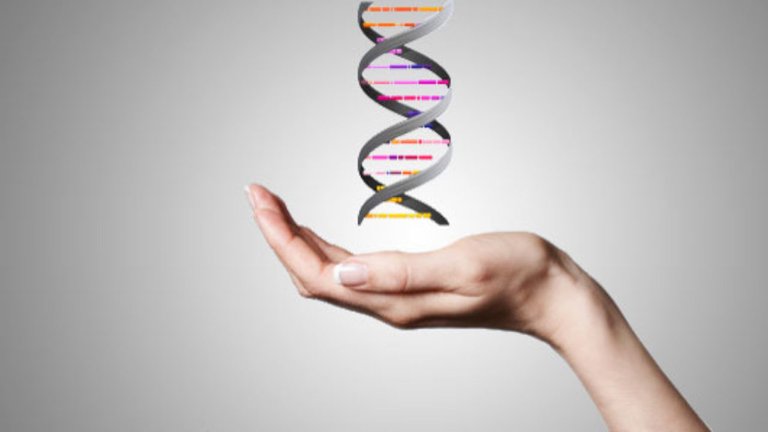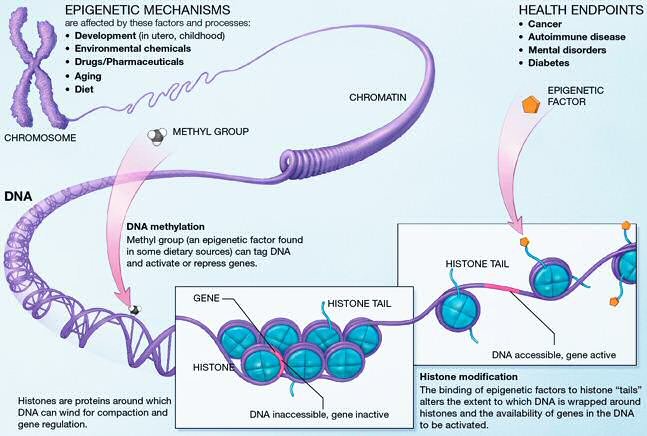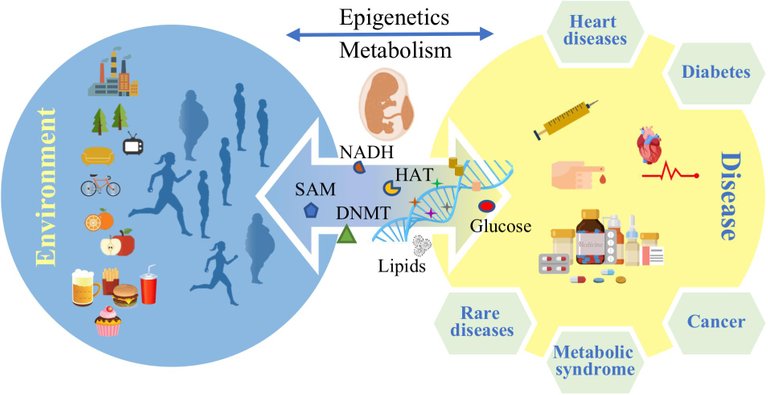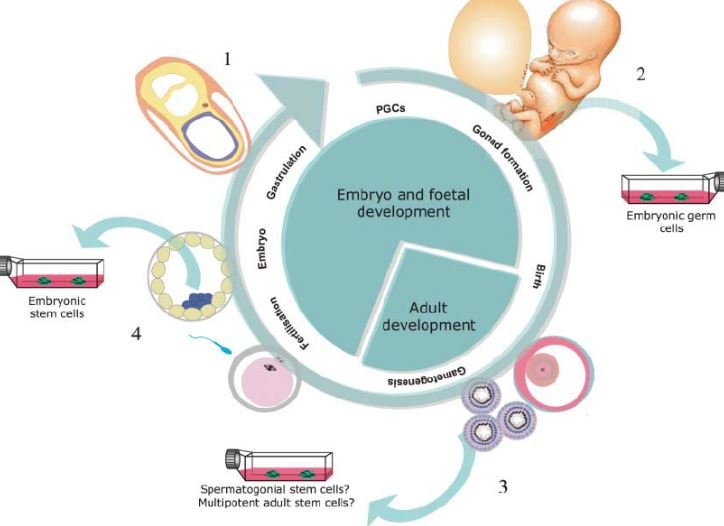Is The Development of Living Being A Work That Has To Be Done with Human?
Is The Development of Living Being A Work That Has To Be Done with Human?

Epigenetics is composed of the words genetics and epigenesis, the development of a living being. It is the link between environmental influences and genes that determines under which circumstances which gene is switched on and when it becomes silent again.
After decoding the first human genome, the text now had around three billion pairs of letters consisting of the four letters A, C, G and T. However, the secrets of the human blueprint were not really deciphered. It is now clear that genes do not only control, they are also controlled.
The human genome has around 25,000 genes, does not yet explain why one gets Alzheimer's and the other can handle stress poorly, why two people have the same cancer gene, but only one of them also gets cancer. However, this can be explained with epigenetics, an emerging branch of research in biology.
Humans have more than 200 cell types, and almost every cell has the same DNA sequence, but not all genes are active in every cell. The primary information that defines a human being is the gene sequence, otherwise identical twins would not be genetically identical and would be so similar externally.
But epigenetic changes ensure that only one twin is more susceptible to diabetes. When Spanish researchers examined genetically identical pairs of twins between the ages of three and 74, it was clear that the youngest twins hardly differed in their epigenetic code, the oldest twins, however, were immense.
:max_bytes(150000):strip_icc()/GettyImages-499474225-5711c21c5f9b588cc2646dc7.jpg)
In the course of life, twins go through different things, develop different habits or are in different circumstances and so their epigenetic codes sometimes develop in different directions.
Epigenetic Code
The best-known function of epigenetics is methylation. Small molecules so-called methyl groups consisting of one carbon atom and three hydrogen atoms dock onto the DNA strand and thus prevent the subsequent gene sequence from being read and translated into a protein. This is how the gene is switched off.
So-called histone acetylation also plays an important role in epigenetic labeling, in order for a cell's two-meter-long DNA strand to fit into the tiny cell nucleus, it has to be packed tightly. The strand winds up to hundreds of thousands of pearls, the histone complexes.
In order to activate the genes located there, the genetic material must first be unpacked again. Small molecules help, the acetyl groups, which loosen the DNA strand and make the genes readable at this point.
On the map of the human genome, one can then mark the sites with the special molecules and in addition to the genetic code, the epigenome is obtained as a second code. There is not just a second code, a person has countless epigenomes. After all, each cell type contains the same gene sequence, but different labels.

Epigenetics opens up some black boxes
It has long been known that green tea is so healthy that it improves cancer statistics. But why this is so can only be clarified with epigenetics. When brewing the unfermented tea leaves, a substance with the complicated name epigallocatechin-3-gallate is released.
This substance reactivates a gene that provides the blueprint for a cancer-fighting substance. Especially in older people, this gene is often methylated and therefore silent, the anti-cancer effects of this one gene would be gone. The green tea acts as an exfoliant for the gene sequence.
In the case of bees, it becomes clear how food alone can have an epigenetic effect. Whoever receives a honey-pollen porridge becomes a sterile worker bee , and whoever is allowed to snack on royal jelly becomes a queen.
The honey-pollen porridge ensures that genes for bee development are extraordinarily methylated and thus muted. Conversely, the royal jelly contains up to five percent of a fatty acid that can epigenetically reactivate muted genes.
Human relationships has impact on the epigenome, life and health
An infant who receives too little love and security does not only get attachment problems, but also has biologically demonstrable disorders in the stress hormone system.
Traumas not only cause scars in the soul, but also scars in the genome. If these scars are also in the genome of the germ cells, then they are even passed on, as epigeneticists have found.

Epigenetic can be inherited
An example of the epigenetic memory is that of the pregnant Dutch women from the hunger winter. It seems plausible that the women gave birth to underweight babies. But then it became clear that the offspring had depression, overweight or schizophrenia more often than average. The children developed age-related illnesses, such as heart problems or diabetes at its early age.
A further investigation showed that the sons of the hunger winter mothers predominantly had overweight offspring. The experience of these mothers and the resulting efforts to prevent starvation by building up fat reserves apparently had an impact on the generation after next, even though the grandchildren were in abundance with less food at a time had been conceived.
The grandchildren's genetic material apparently also contained information about the living conditions of the grandparents. The offspring of the daughters of the hunger winter mothers was hardly important. The overweight offspring of these mothers' sons can be attributed, for example, to poor eating habits on the part of the parents, which also affected the children.
Theories of evolution
This has sparked a controversial discussion among scientists. Because it's no longer just about methyl groups, genes and databases, but also about the theory of evolution.
Accordingly, giraffes stretched their necks the higher the tasty leaves hung on the trees. This extended throat would then be passed on to the offspring. Properties that only develop in the course of a lifetime are inherited. This is what happens in epigenetics when gene switches are switched to semen or egg cells and these switches are passed on to the offspring.
Epigenetics are soft changes, changes that make life adaptable, but which can be reversed. Genetics, on the other hand, causes hard changes, because DNA mutations are not reversible. However, these mutations drive evolution in front. Epigenetic inheritance in humans also seems rather unlikely because there is a strict separation between body cells and germ cells in all mammals. Body cells react to environmental influences, but cannot pass this information on to offspring.

Only the germ cells can do that. However, with them almost all epigenetic markers are carefully removed in two cleaning waves. In contrast, plants know neither this strict separation nor the two cleaning waves. This is why epigenetic inheritance is much more common among them.
Questions to ask
Where else can you see that epigenetic changes are inherited?
How exactly do the epigenetic mechanisms work in detail?
Which genes are switched on by which foods and lifestyles, which ones are switched off?
And how can this be used for the treatment of diseases?
It is unclear whether they will find valid answers to these questions. Some scientists do not expect any important new findings for medicine from epigenetic research.
The reason for this is that most studies that want to prove that the causes of diseases are in the epigenome suffer from problems in design and implementation, so that their interpretability is severely impaired. It is difficult to clearly determine whether the condition of an epigenetic regulation under study is actually a possible cause or a consequence of an illness.
There is hardly any evidence of epigenetic influences in humans. Because while animals and plants can be crossed and manipulated in a controlled manner , it is impossible for humans. And results from animal experiments cannot be easily transferred to humans.
Other scientists consider epigenetics to be of great importance. They hope to gain a better understanding of diseases and their treatment and assume that epigenetics will open up new avenues in medical research.